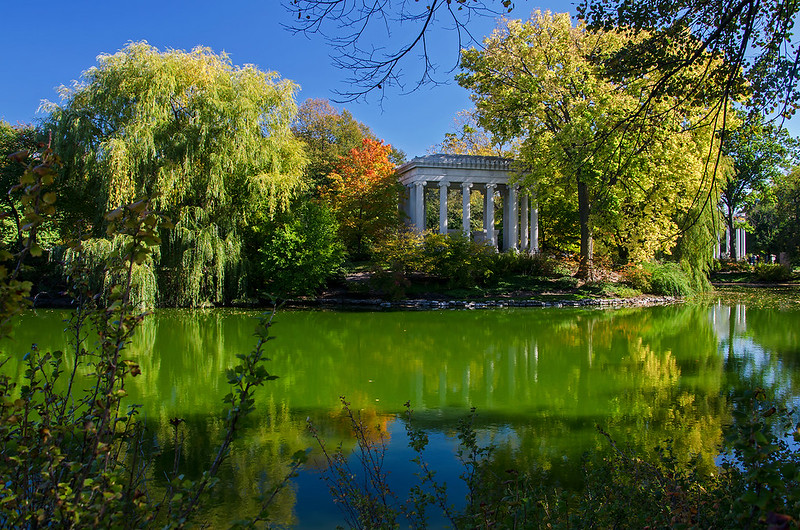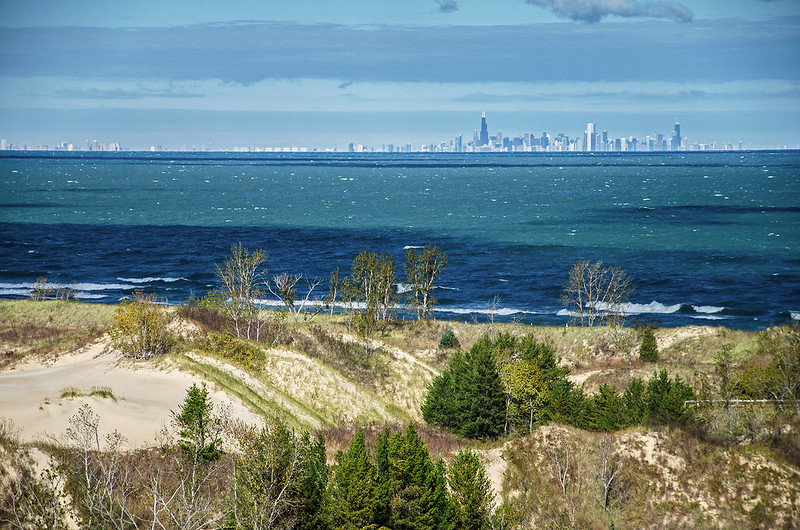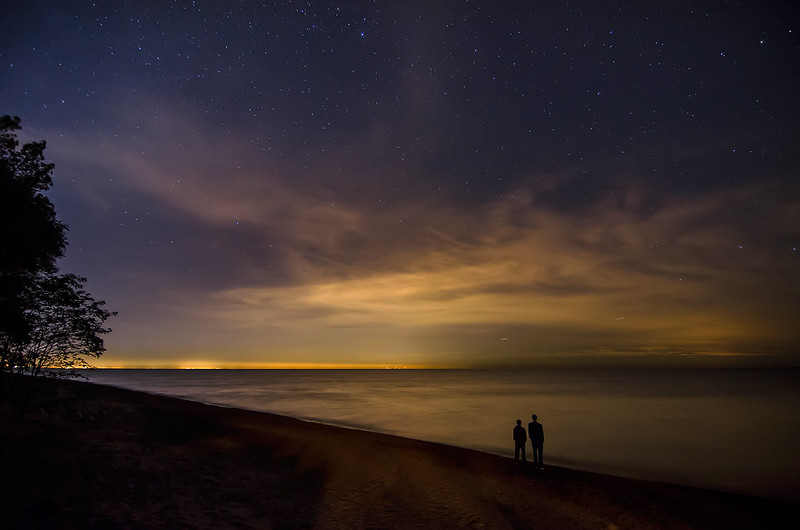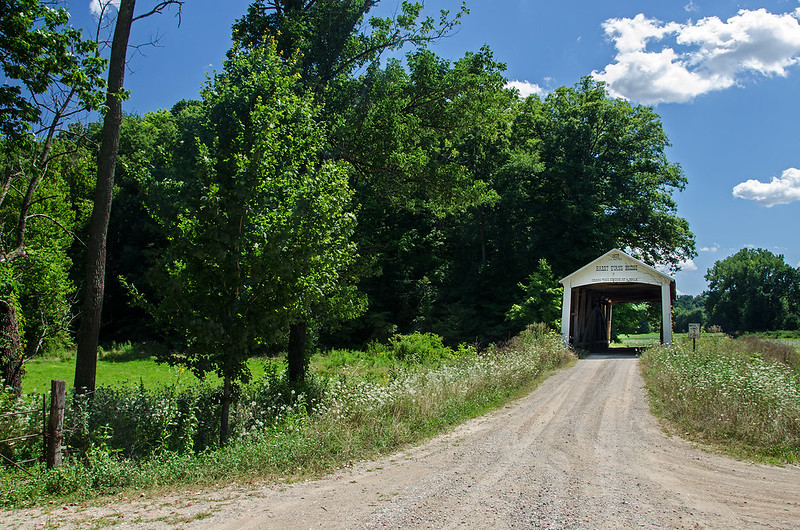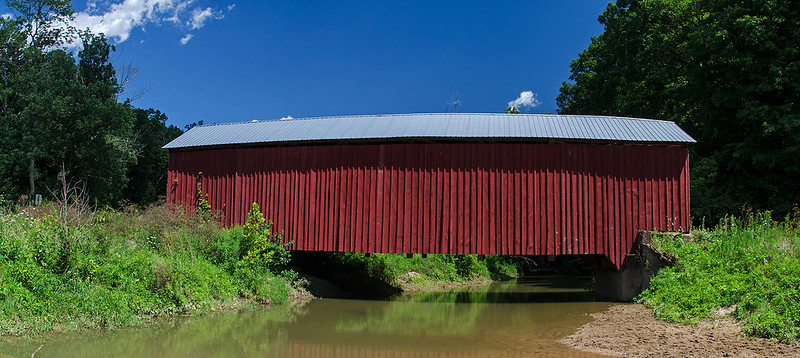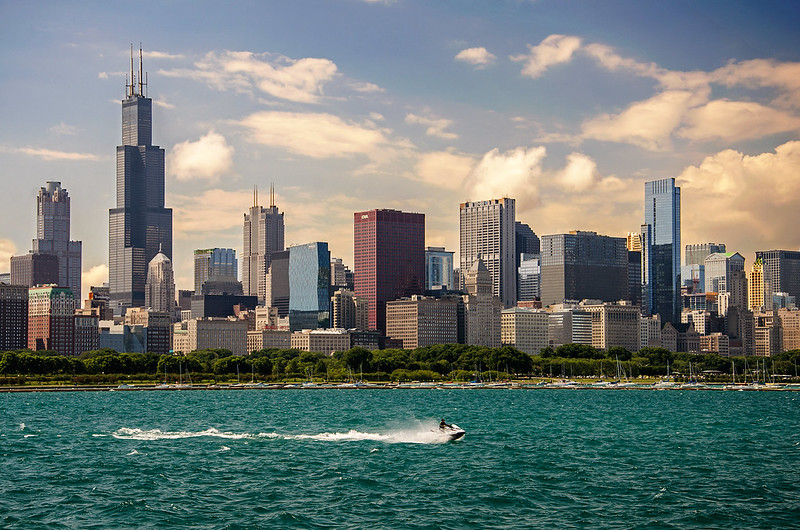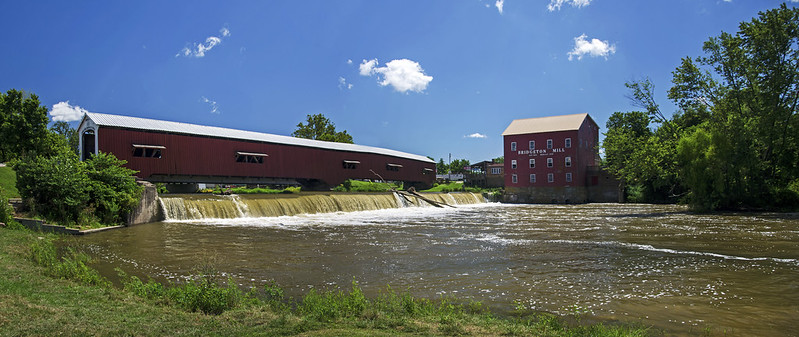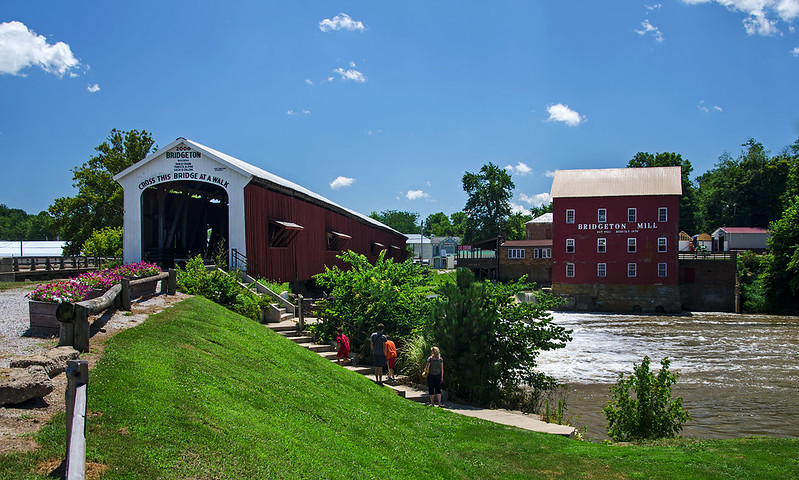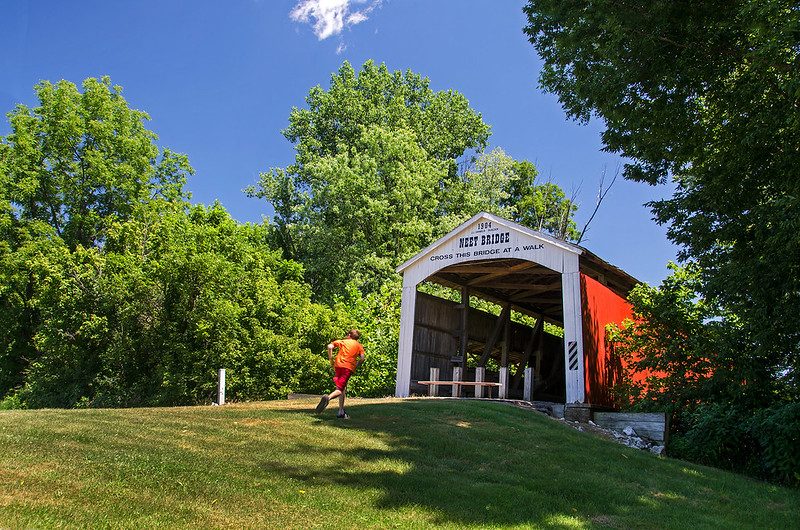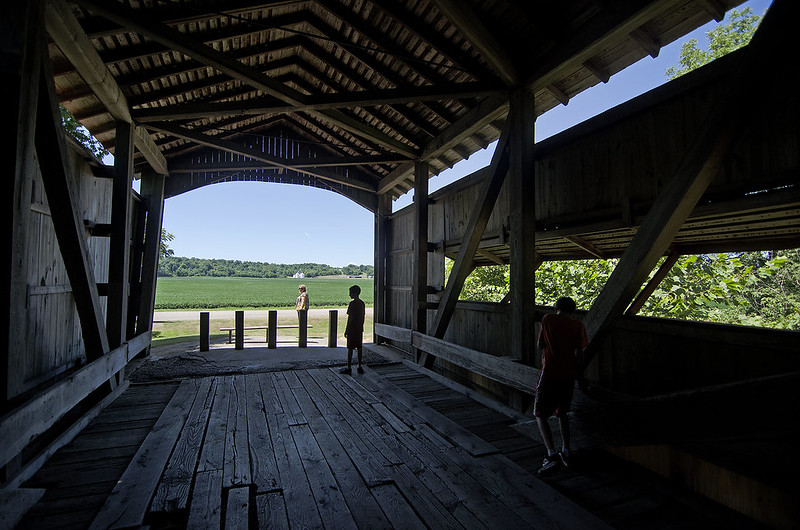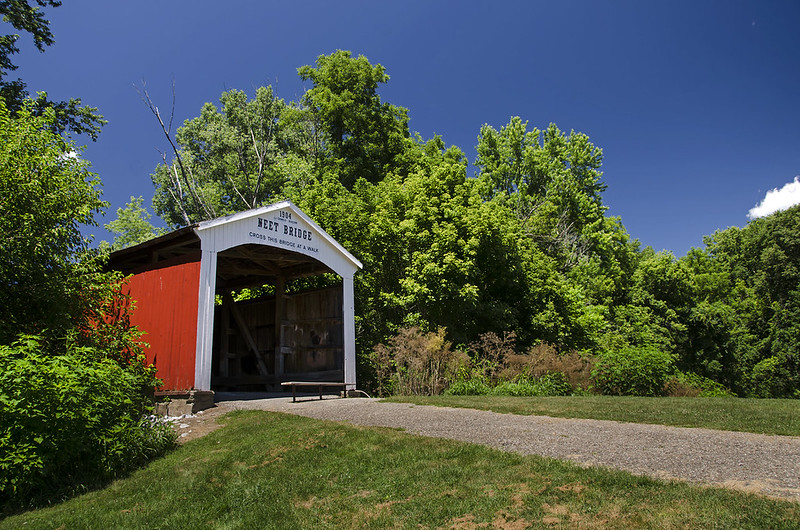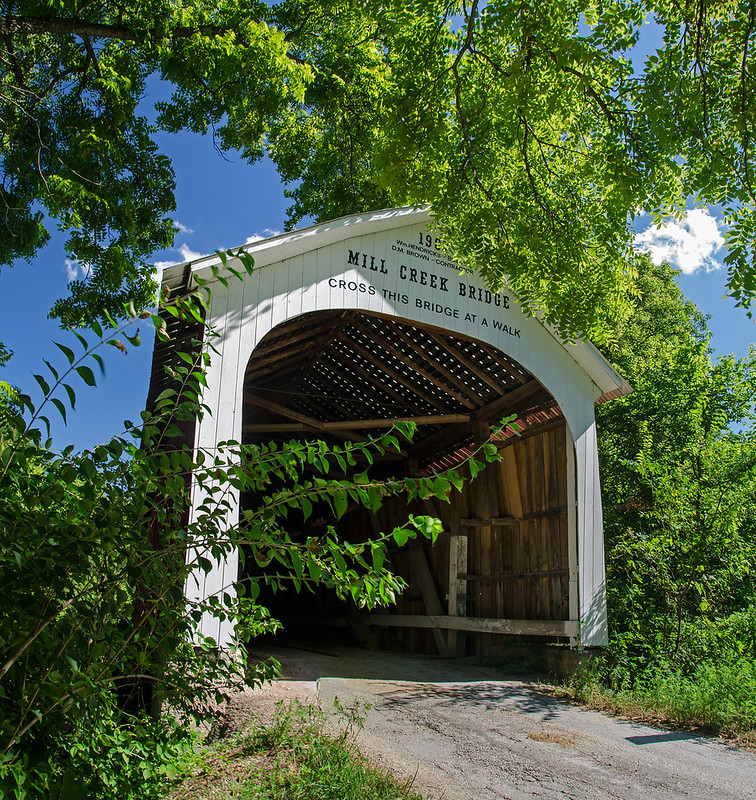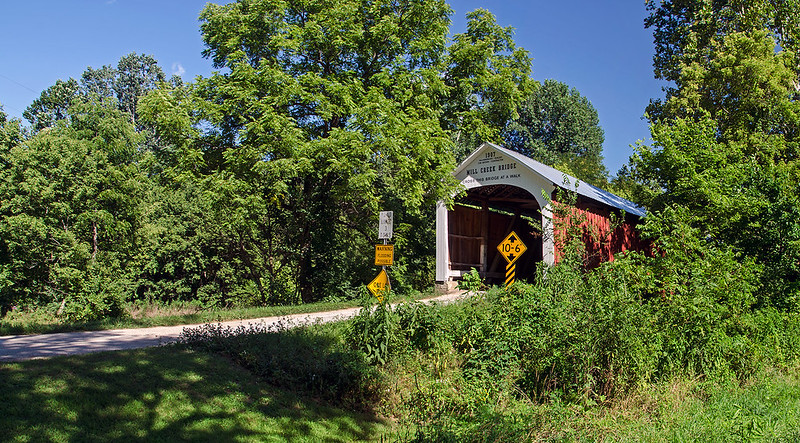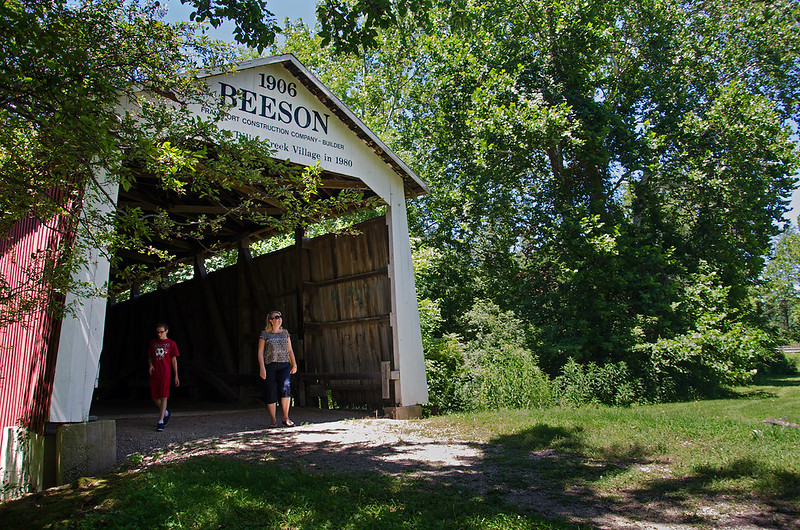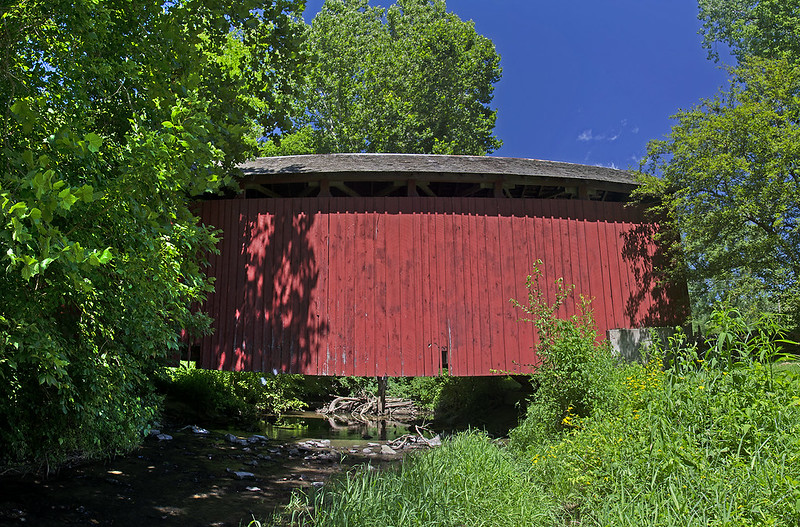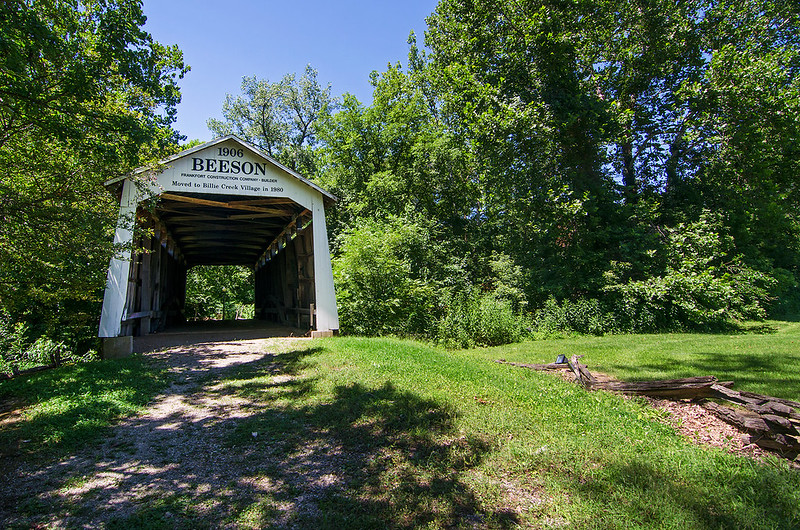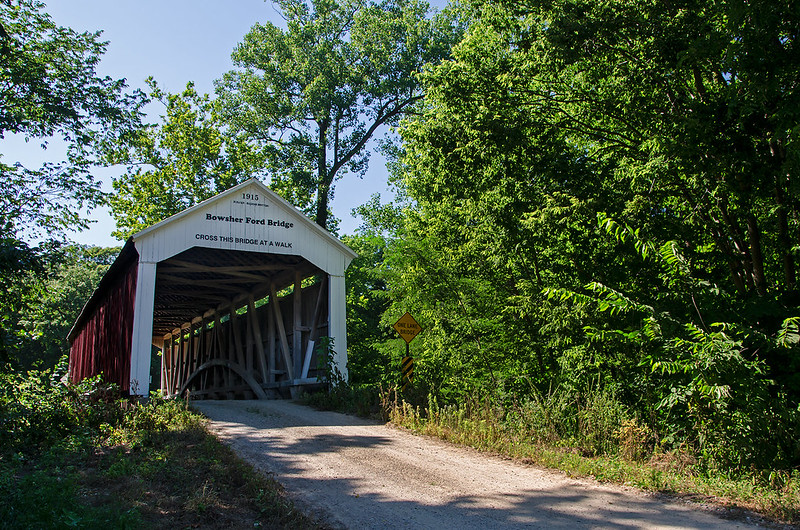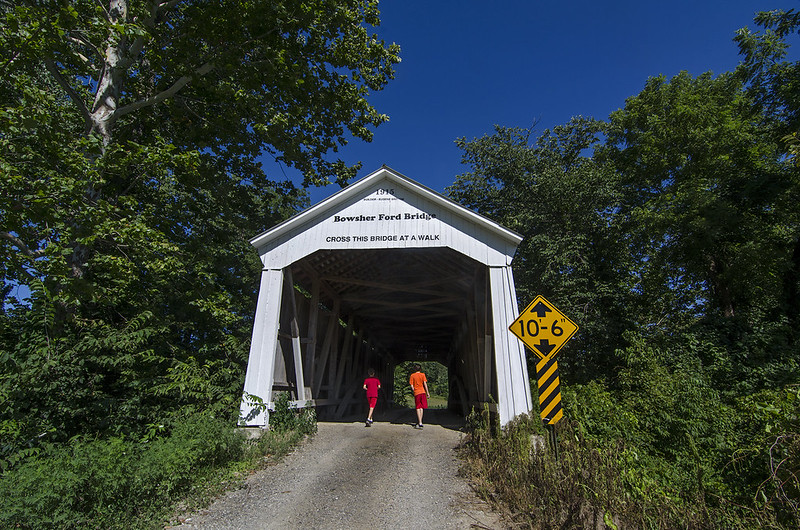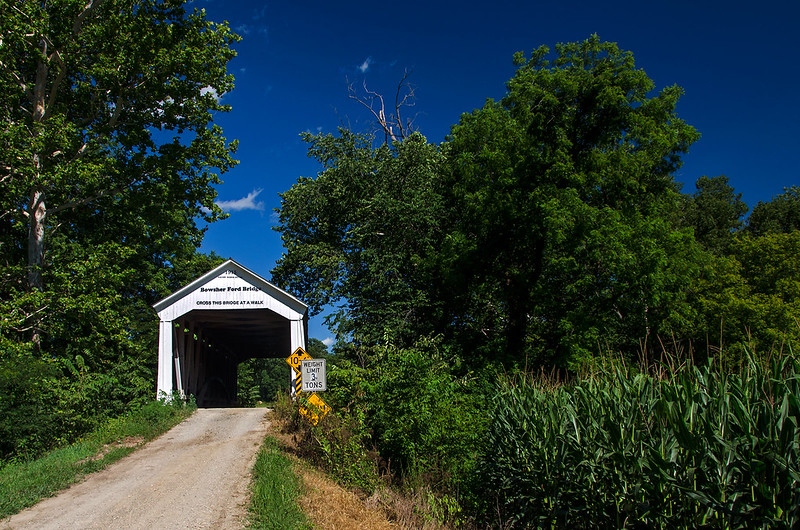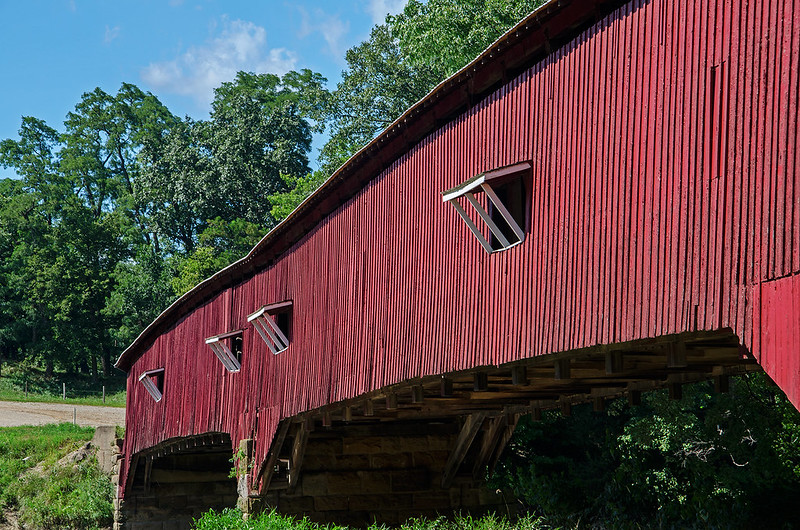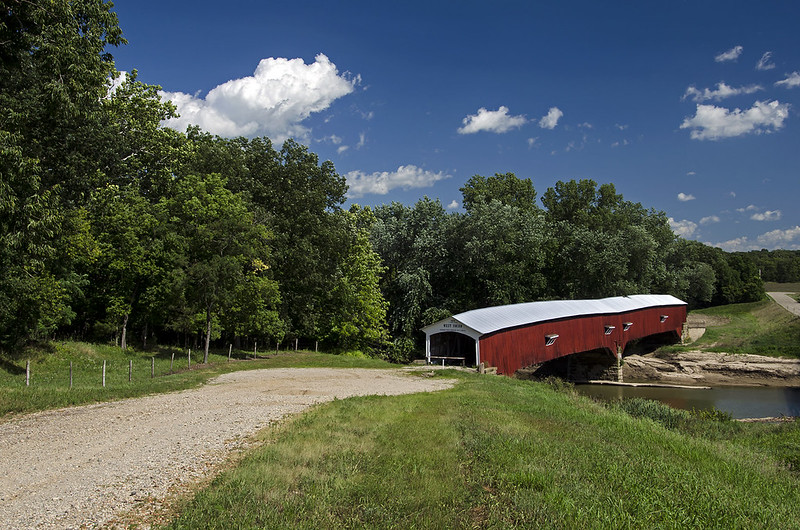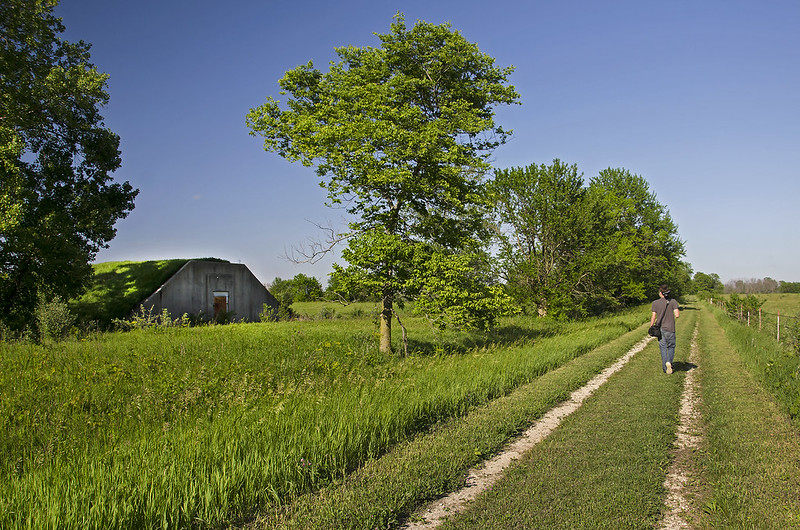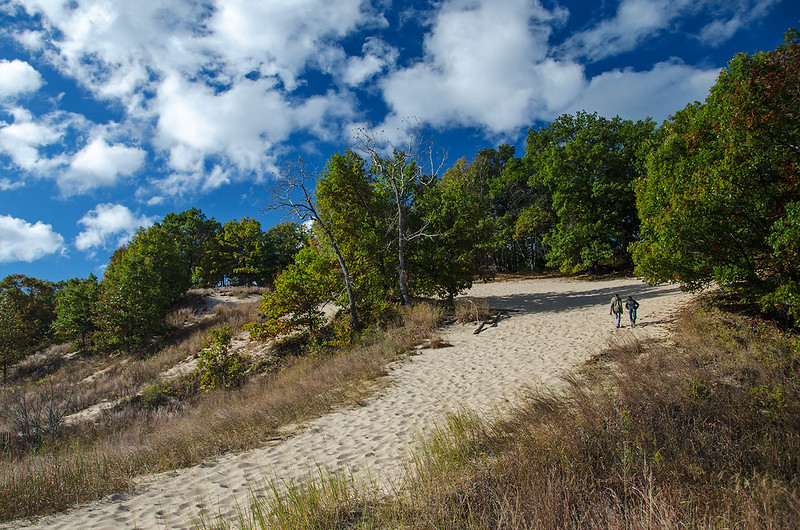
The 3.4 mile Long Lake Trail is one of three trails at the Indiana Dunes National Lakeshore's West Beach. The loop begins with an ascent up a sandy dune, and follows the dune ridge through the rather dense woods first bordering the beach, then overlooking the grass of the Great Marsh.
The second half of the loop follows the foot of the dunes past Long Lake, and through the grassy, flat areas filled with prickly pear cactus, and pitcher's thistle. You might even spot a few six lined racerunner lizards in the summer months.
This trail is one of the few places at West Beach one can still hike up a sandy dune - something that is becoming increasingly rare at the Indiana Dunes National Lakeshore (all in the name of erotion prevention). It seems to me that blocking off the paths through the dunes does very little execpt create more erosion due to ignorant visitors walking around the signs and fences. Instead of one path, many more are created, and in the process, more and more plants are trampled adding to the problem.
If the traditional paths are left open to those who have walked them for decades, as well as new hikers, not only will visitors enjoy them, new, destructive paths won't become a problem.
Instead, visitors can admire the dunes from the asphalt parking areas, and tell their grandchildren storys of how they once walked on top of the dune.

